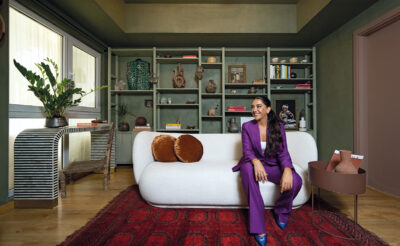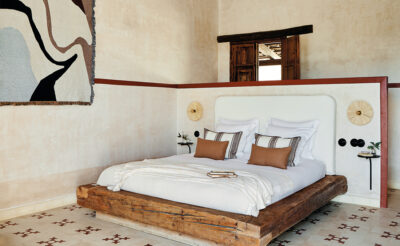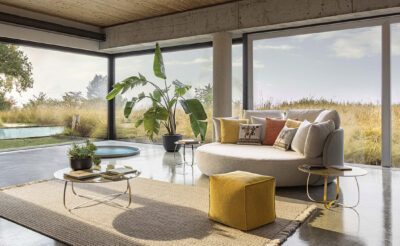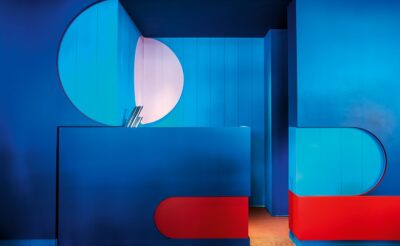A movement not a trend, biophilic design is the green philosophy that is currently gripping the design world, evoking nature and its myriad of colours, textures and moods
You may not know it, but if you’re a fan of plant-filled rooms with plenty of natural light, incredible vistas from your bedroom window or the soothing sound of indoor water features, you’re feeling the lure of biophilic design. Rooted in sustainability and climate change, which architects and designers increasingly see as integral and necessary to the design process, it integrates elements of the natural world into our homes, connecting us to nature through creative designs.“Biophilia refers to a nature-inspired and nature-centric approach to architecture and design, “Debbie Flevotomou of the London-based Debbie Flevotomou Architects tells MOJEH. “This could be design inspired by forms of nature and expressed in motifs, shapes and patterns; bringing nature inside in the form of plants, water features, natural sounds and scents; or from beautiful and panoramic views.”

Floor-to-ceiling windows are essential when it comes to bringing the outdoors in. Turkey’s Six Senses Kaplankaya is the work of Clodagh Design
The term biophilia itself dates back to 1973, when psychologist Erich Fromm first used the word to describe the love of life or living systems. He believed that humans have an affinity for nature and the great outdoors and, it turns out, he was right. The addition of greenery in overlooked, urban spaces, for example, has long been used in modern cities in the form of vertical gardens, with the first large indoor green wall constructed in Paris’s La Cité des Sciences et de L’Industrie in 1986. Numbers have been surging dramatically since. Interior designers are increasingly getting in on the act, both directly in terms of connecting through nature with elements such as water, trees, plants and light, and indirectly though materials, colours, textures and patterns.“Biophilia has always been current as it responds to a core human need to stay connected with nature,” explains Flevotomou. “However, biophilic design is now more pertinent than ever as it is a way to restore the severed connection between urban living and nature, accentuated by the lockdown experience of urban indoors living. Research has shown that a biophilic environment increases productivity and creativity, reduces stress and boosts self-reported wellbeing.”
Putting its beliefs into practice, the team is in talks with UAE and KSA governments about an exciting new project, The Great Reef. Currently in the design stage, the museum will connect guests to nature with its impressive display of moving parts including petals on top of the building which behave the same way as a flower—opening in the morning and closing down at night, collecting sunlight during the day as it rotates along its axes and collecting moisture during the night for air-conditioning, cooling and water.
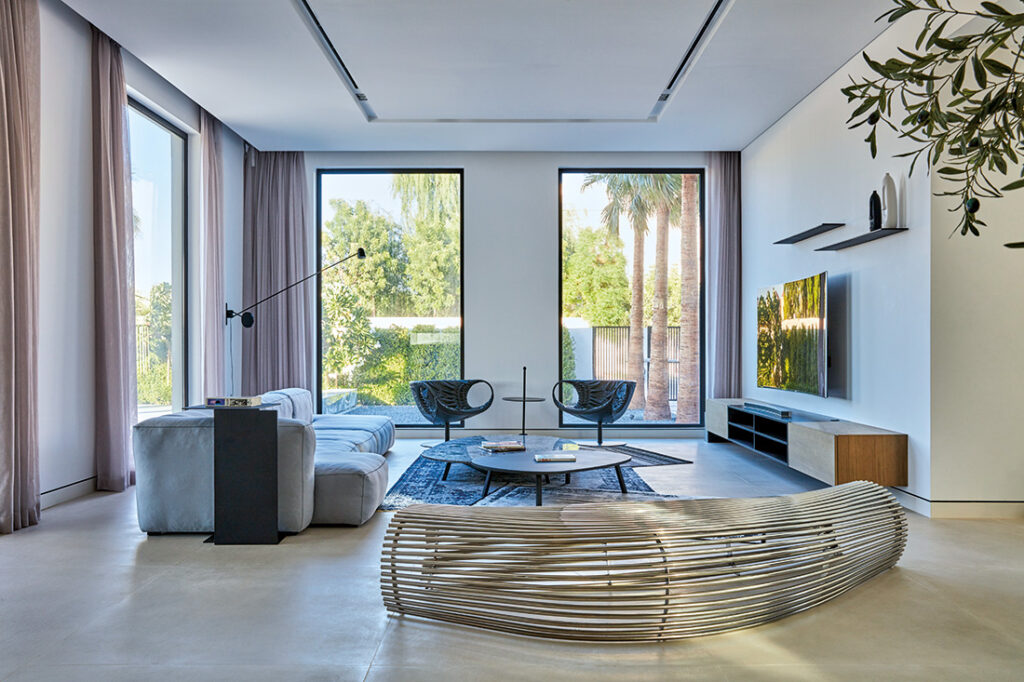
The popularity of indoor-outdoor living skyrocketed during the pandemic when we were confined to our homes and it has since been discovered to have many mental health benefits.(Courtesy of Roar Design Studio)
“Our work is about those qualities that define biophilia,” Karen Stonely, co-principal of SPAN Architecture and one of the industry’s biggest champions of the trend, tells MOJEH. “That’s a connection with nature, designing with light, the imitation and use of patterns and shapes related to nature, utilising natural materials, colour, and exposing the sensorial experiences of a site, be it the sound of wind or water.” For example, The Studio’s August Moon project, which comprises four residences on the Great Western Bay in Maine, US, is built on a hillside stratum of rocks, moss, ferns and trees. The cedar, fir and stone used in the interiors come from a quarry just two miles from the estate, while a simple falling water feature at the home’s entrance celebrates the different seasons and weather. “The lower-level bedrooms are subterranean below a green roof, whereas the glass main bedroom suite flies free, cantilevering akin to a tree house,” explains Stonely. “You sleep nestled into the hillside within the canopy of a forest.” As for the interiors, the dining table is made from leftover wood from the construction, while a handrail is made of perforations cataloguing the phases of the moon and its shadows which change with the seasons. “It’s a perfect example of how nature can co-exist with design,” she adds.
Closer to home, numerous regional interior designers and architects are getting in on the act, with the Dubai-based Anarchitect working its biophilic magic on a stunning Dubai Hills villa, which scooped the Award for the Residential Project of the Year 2019 MENA at the Commercial Interior Design Awards. “Perhaps the most impactful intervention of the whole project was the introduction of a serene open-air courtyard adjacent to the entrance gallery in which the expansive glazing frames a six-metre tall olive tree,” senior architect Tom Herd tells us. “Scattered loose white gravel also ensures the courtyard has a consistent brightness to bounce light back into the adjacent interior spaces and a ‘satisfying’ crunch beneath each footstep; a desire of the architects to deliver an appealing acoustic to break the ambient silence and remind the clients of their life back in European gardens.” In fact, olive trees seem a particularly popular choice in Middle Eastern interiors, with Dubai-based studio Roar also incorporating one in the home of Anas Bukash, owner of the Al Quoz-based salon CHALK. A largely open-plan space with a very neutral colour palette, clean lines and geometric shapes, the highlight is a huge olive tree which takes centre stage on the ground floor. Plenty of natural elements are also used throughout the home including wood, metal and stone, while the entire home balances clever use of space, light and glass.
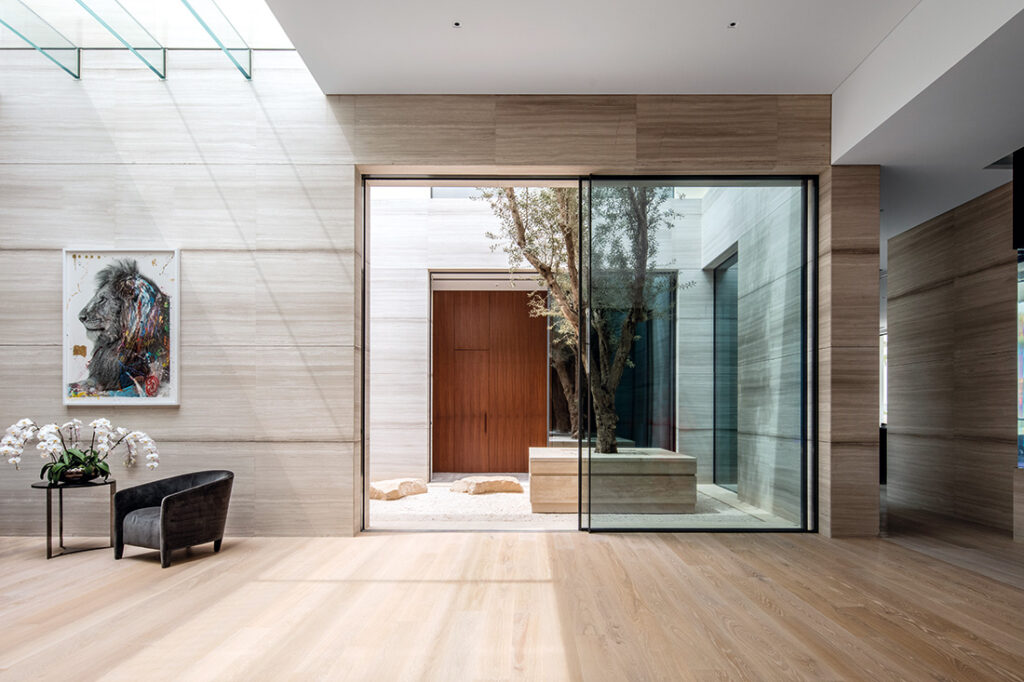
If you prefer a minimal approach rather than full-fledged foliage, ease your way in with strategically placed plants, like in this Anarchitect-designed courtyard
Much deeper than just aesthetics, biophilia is also linked strongly to improved mental health and mood. After all, be it touching plants and flowers, listening to the gurgling of water, or simply looking at a beautiful view, there’s something both calming and grounding about being at one with nature, especially in the comfort of your own home. “A flash of green through the windows, wall covered by vines, even a basil plant on your kitchen window—I believe scenes like these greatly contribute to the healing effects of nature on the human spirit,” Clodagh of Clodagh Design suggests. “We bring the outside in in many of our projects, and that way residents have the best of both worlds.”
While it may now be a thing of the past, the pandemic also highlighted the fact that people crave nature above all: “Clients now ask for balconies, terraces and green rooms in their buildings, features not mentioned so often pre-pandemic. We use fountains, reflecting pools, the splash of water from scuppers. Water brings harmony and moves energy around. Fire is also biophilic, energising and cleansing.” Avid travellers can check out Clodagh’s work at the likes of Six Senses Douro Valley in Portugal, which features an organic garden where guests can dine plus a shady pavilion covered with grape vines in which to relax, and Six Senses Kaplankaya in Turkey, where the team moved a 300-year-old olive tree which now sits on a small island on a pond in the hotel’s courtyard. “Both these properties highlight the best of nature,” she adds.
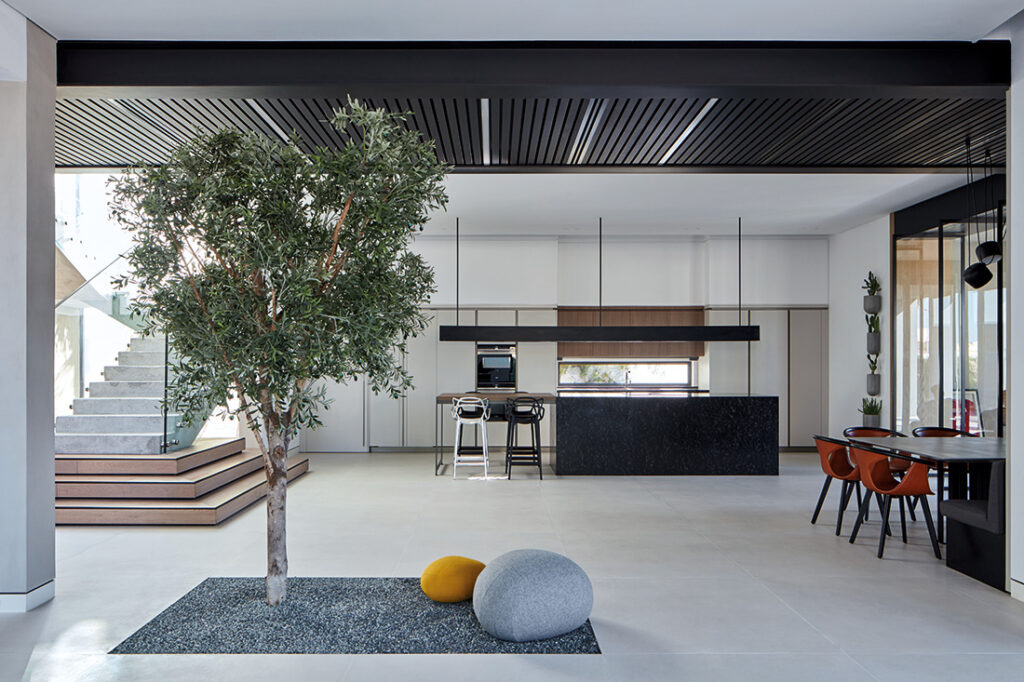
Anas Bukhash’s home, designed by Roar Design Studios
If you’re new to biophilic design, don’t be afraid to start small by incorporating house plants, accessories crafted from natural textures and even sound machines before working your way up. “Try optimising the display of belongings that evoke biophilic qualities for you,” advises Stonely. “Maybe it’s the image of a meaningful landscape, a shell from a trip to the beach, a naturally-woven blanket or an open window that captures the sound of the breeze. Optimise what you already have latently to improve your day to day life. Good planning to harvest the dormant nature of spaces is always the first thing to be incorporated, and the aesthetic can then be constantly evolved.” Clodagh agrees, adding that a few small plants on a windowsill can be just as effective as a full green indoor wall, a garden view, fountains and indoor waterfalls: “Different types of biophilia suit different tastes and personalities, so it’s important to be clear about what works for you before starting. ”Environmentally-friendly, aesthetically pleasing and great for our mental health—this is an interiors ‘movement we could all get on board with.
Read Next: The Interior Design Trend You’ll See Everywhere In 2023
